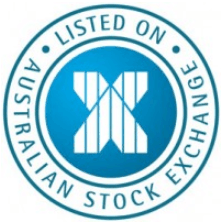
Chris Weston, Chief Market Strategist at IG Markets
Asia has witnessed another extension of the gains seen in recent days, and it’s clear there is a geographical shift in terms of money flow.
The long emerging market trade is working well, although China is having a breather today after strong gains, which have been helped by recent actions from the government and central bank. Monetary easing, backed by a number of equity market-friendly reforms, has seen good flows towards China, with the Hang Seng following suit. Japan has also broken out of its recent range, assisted by good corporate earnings and a sense that the BoJ could increase its asset purchase program in October.
What’s interesting is the sheer size of the performance over the month. Month-to-date (in USD terms to create a level playing field) the China CSI 300 is up 8.3%, Hang Seng +7.1%, ASX 200 +3.8%, Nikkei 225 +2.5% and Jakarta index +6.8%. Turning to the West, in the same time the S&P 500 is up 0.5%, FTSE flat, DAX -3.8%, IBEX -2.2% and Eurostoxx 600 -3.2%.
The ASX 200 has played catch-up today, bursting through 5600, hitting a high of 5631. Price action is clearly bullish, with gains seen in all sectors and backed by reasonable volume. Technically the ASX 200 is not overbought, with its 14-day RSI at 69, suggesting the market can ride this wave of short-term opulence. 70% of companies are trading above their 20-day moving average, which when you think only 13% of companies were above this short-term average in February, highlights how broad-based the gains have been. What’s more, 11% of companies are trading two standard deviations from their 20-day moving average.
It’s interesting to see the strong underperformance of European equities this month, despite a slight bounce in financial names of late. Our index opening calls are shaping up for a modestly lower open, and if sanctions against Russia have caused investor outflows from Europe then the new sanctions from the EU could see this headwind continue. It could still be feasible to extrapolate further performance from this issue by being long Aussie SPI futures and short Eurostoxx 600 futures as a pair’s trade; however this is a fairly mature trade. However, if you believe the new Russian capital market sanctions could cause a fresh move lower in confidence towards the region, then this trade could be a low beta way of playing the market conditions.
It’s also interesting to see the strong flows into European fixed income, with the German 10-year bond settling at 1.12% and equalling the all-time low. EUR/USD has broken its long-held correlation with peripheral debt markets and is beating to its own drum, helped to a degree by a nice move higher in front-end (two-year) US treasuries.
Russian assets holding European equities back
Russian assets will naturally be in play, with markets opening very shortly; however it’s also looking likely that Argentina could default on its debts today. Whether a default triggers a credit event and a subsequent risk-off move in other asset classes is yet to be seen, but both the Russian sanctions (and the potential headwind to Europe) and Argentina debt situation suggests money could continue to head East.
The event risk also focuses firmly at a stock level and in today’s trade we hear from ENEL (9.5% weight on the Italian MIB), Total, Bayer, Tullow, British American Tobacco, Barclays and Airbus. In the US the focus will be on Twitter’s outrageous after-market performance – it is hard to believe Twitter is a large cap company when you see a near 30% gain in the post market. This sort of move is almost what you’d expect from an oil exploration or small pharm company, but it seems the results have wholly impressed. An 11% beat on revenue and 54% beat on adjusted earnings have certainly helped, with upgrades to the company’s Q3 and full-year estimates. Advertising growth is accelerating, with mobile advertising revenue growth of 186% yoy. Clearly there has been some heavy short covering as well, but the volatility in this name is extremely impressive and it seems many are seeing quite a strong investment case here, despite being expensive.
Options strategies could be interesting
US data will be the main event though, and traders should watch price action in short-term US treasuries as a guide. I looked at the long USD/JPY idea yesterday at 101.86 and the trade has started to move higher, in-line with moves in the two-year treasury. Still, with Q2 GDP (expected to increase 3% annualised), ADP private payrolls (230,000 jobs to be created) and FOMC meeting on the docket we could see heightened volatility.
One-week implied options volatility has increased from 3.5% two weeks ago to now stand at 6.1%, which is still at low levels on a relative basis. Given the raft of key releases today and for the rest of the week, I quite like buying volatility. Here one could potentially buy a weekly (August 8) at the money 102.00 call and put option for a premium of 76 – this is called a straddle. To potentially profit I would need USD/JPY to trade below 101.24 or above 102.76 by August 8 and while I feel there is upside in this pair; this strategy is designed purely to take advantage of a pick-up in short-term volatility.